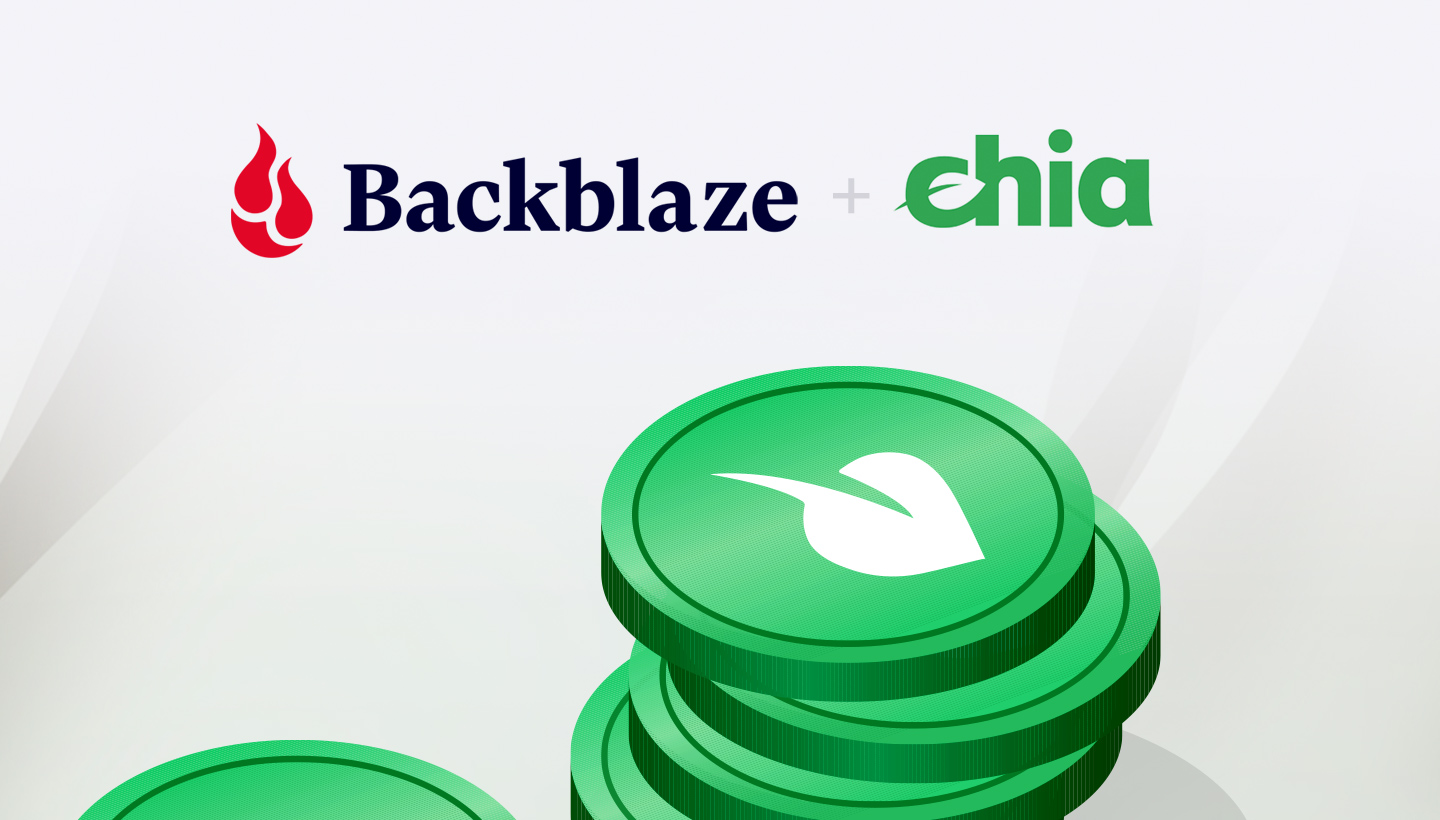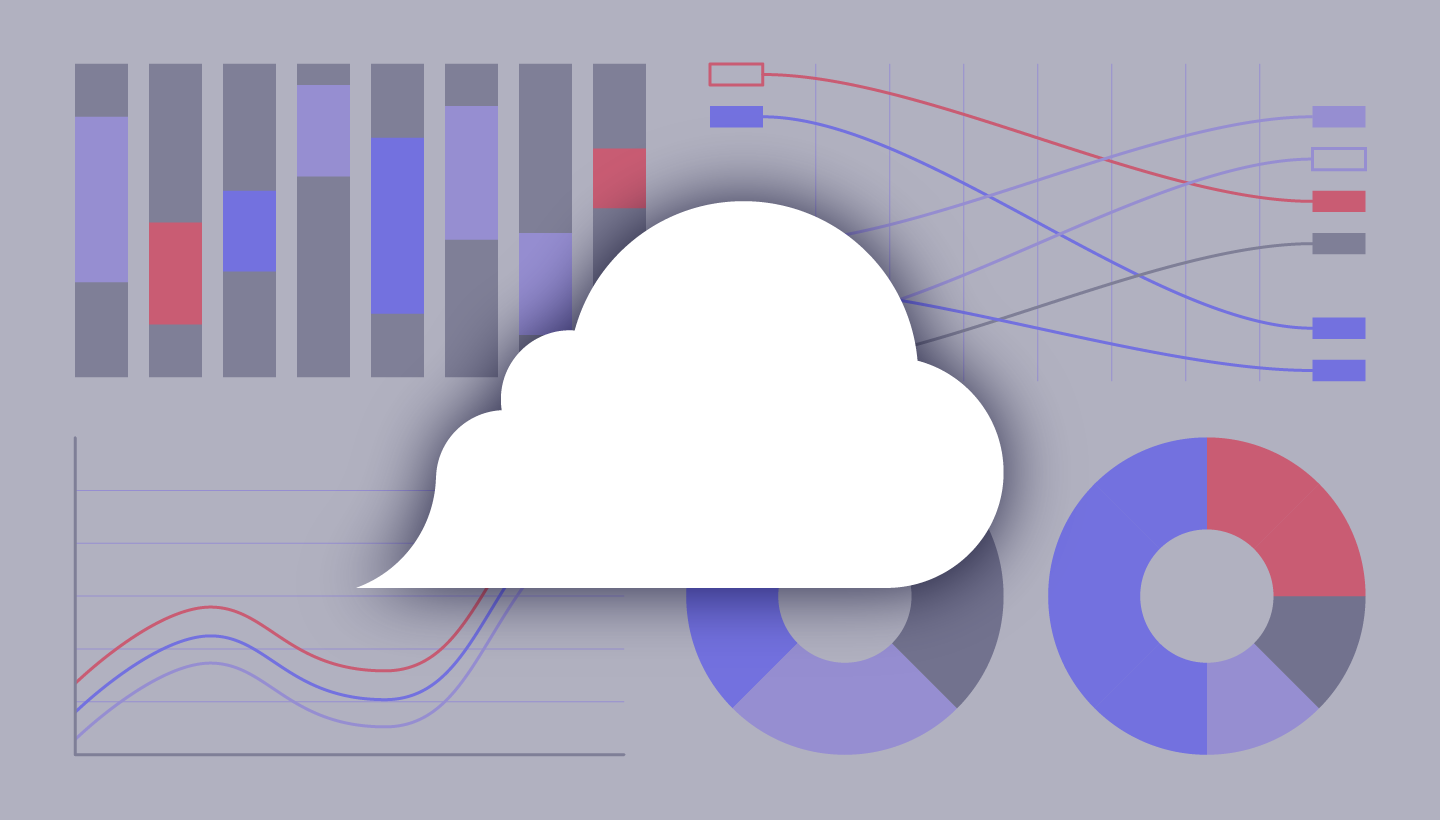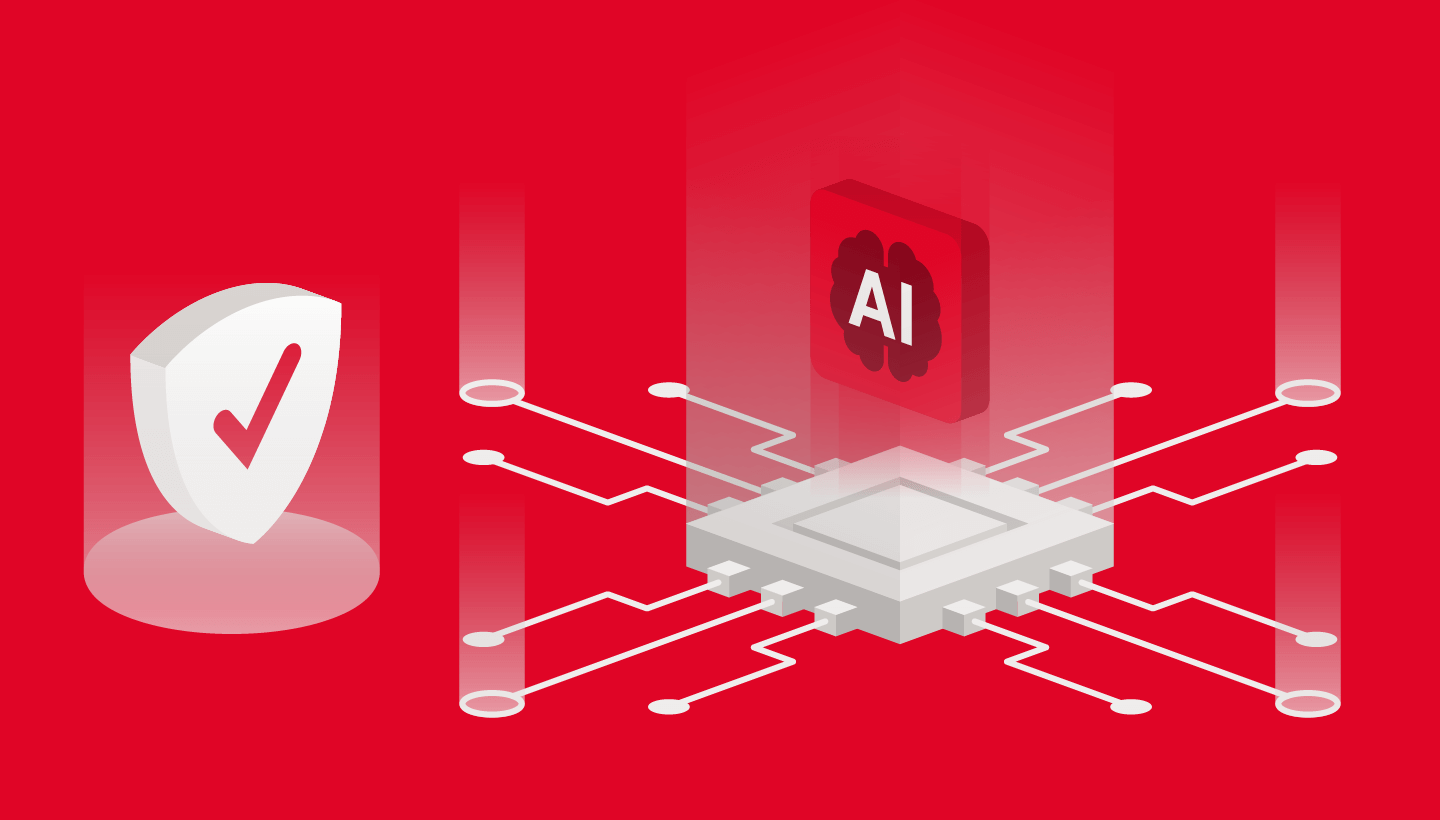
A few weeks ago we published a post about why Backblaze chose not to farm Chia in our storage buffer. Our explanation was pretty simple: We agreed we weren’t in the game of currency speculation, so we just took the value and Netspace at the time and ran some math. In the end, it didn’t work for us, but our analysis isn’t the last word—we’re as curious as the next person as to what happens next with Chia.
The Chia Netspace slowed its exponential climb since we ran the post. At the time, it was increasing by about 33% each week. It’s now hovering between 31 and 33 exabytes, leaving us, and we presume a lot of other people, wondering what the future looks like for this cryptocurrency.
Jonmichael Hands, the VP of storage business development at Chia, reached out offering to discuss our post, and we figured he’d be a good guy to ask. So we gathered a few questions and sat down with him to learn more about what he sees on the horizon and what a wild ride it’s been so far.
Editor’s Note: This interview has been edited for length and clarity.
Q: What brought you to the Chia project?
I was involved in the beta about a year ago. It was right in the middle of COVID, so instead of traveling for work frequently, I built Chia farms in my garage and talked to a bunch of strangers on Keybase all night. At that time, the alpha version of the Chia plotter wrote six times more data than it writes today. I messaged the Chia president, saying, “You can’t release this software now. It’s going to obliterate consumer SSDs.” Prior to joining Chia, when I was at Intel, I did a lot of work on SSD endurance, so I helped Chia understand the software and how to optimize it for SSD endurance over the course of the year. Chia is an intersection of my primary expertise of storage, data centers, and cryptocurrencies—it was a natural fit, and I joined the team in May 2021.
Q: What was the outcome of that work to optimize the software?
Over the year, we got it down to about 1.3TB of writes, which is what it takes today. It’s still not a very friendly workload for consumer SSDs, and we definitely did not want people buying consumer SSDs and accidentally wearing them out for Chia. There has been a ton of community development in Chia plotters since the launch to further improve the performance and efficiency.
Q: That was a question we had, because Chia got a lot of backlash about people burning out consumer SSDs. What is your response to that criticism?
We did a lot of internal analysis to see if that was true, because we take it very seriously. So, how many SSDs are we burning out? I erred on the side of caution and assumed that 50% of the Netspace was farmed using consumer SSDs. I used the endurance calculator that I wrote for Chia on the wiki, which estimates how many plots you can write until the drive wears out. With 32 exabytes of Netspace, my math shows Chia wore out about 44,000 drives.
That seems high to me because I think consumers are smart. For the most part, I expect people have been doing their own research and buying the appropriate drives. We’ve also seen people plot on a consumer drive until it reaches a percentage of its useful life and then use it for something else. That’s a smart way to use new SSD drives—you get maximum use out of the hardware.
Companies are also offering plotting as a service. There are 50 or 60 providers who will just plot for you, likely using enterprise SSDs. So, I think 44,000 drives is a high estimate.
In 2021, there were 435 million SSD units shipped. With that many drives, how many SSD failures should we expect per year in total? We know the annualized failure rates, so it’s easy to figure out. Even in a best case scenario, I calculated there were probably 2.5 million SSD failures in 2021. If we created 44,000 extra failures, and that’s the high end, we’d only be contributing 1.5% of total failures.
Q: So, do you believe the e-waste argument is misplaced?
I’ve learned a lot about e-waste in the last few weeks. I talked to some e-waste facilities, and the amount of e-waste that SSDs create is small compared to other component parts, which is why SSD companies haven’t been attacked for e-waste before. They’re light and they don’t contain too many hazardous materials, comparatively. Most of them last five to 10 years as well. So we don’t believe there’s a large contribution from us in that area.
On the other hand, millions of hard drives get shredded each year, mostly by hyperscale data centers because end customers don’t want their data “getting out,” which is silly. I’ve talked to experts in the field, and I’ve done a lot of work myself on sanitization and secure erase and self-encrypting drives. With self-encrypting drives, you can basically instantly wipe the data and repurpose the drive for something else.
The data is erasure coded and encrypted before it hits the drive, then you can securely wipe the crypto key on the drive, making the data unreadable. Even then, tens of millions of drives are crushed every year, many of them for security reasons well before the end of their useful life. We think there’s an opportunity among those wasted drives.
Our team has a lot of ideas for how we could use Chia to accelerate markets for third-party recycled and renewed drives to get them back in the hands of Chia farmers and create a whole circular economy. If we’re successful in unlocking that storage, that will bring the cost of storage down. It will be a huge win for us and put us solidly on the right side of the e-waste issue.
Q: Did you expect the boom that happened earlier this summer and the spikes it created in the hard drive market?
Everybody at the company had their own Netspace model. My model was based off of the hard drive supply-demand sufficiency curve. If the market is undersupplied, prices go up. If the market’s vastly undersupplied, prices go up exponentially.
IDC says 1.2 zettabytes of hard drives are shipped every year, but the retail supply of HDDs is not very big. My model said when we hit 1% of the total hard drive supply for the year, prices are going to go up about 15%. If we hit 2% or 3%, prices will go up 30% to 40%. It turns out I was right that hard drive prices would go up, but I was wrong about the profitability.
It was the perfect black swan event. We launched the network on March 19 at 120 petabytes. Bitcoin was at an all-time high in April. We had this very low Netspace and this very high price. It created insane profitability for early farmers. Small farms were making $150,000 a day. People were treating it like the next Bitcoin, which we didn’t expect.
We went from 120 petabytes when we launched the network to 30 exabytes three months later. You can imagine I was a very popular guy in May. I was on the phone with analysts at Western Digital and Seagate almost every day talking about what was going to happen. When is it going to stop? Is it just going to keep growing forever?
It’s not shocking that it didn’t last long. At some point profitability gets impacted, and it starts slowing down.
Q: Where do you see hard drive demand going from here?
If the price doubles or triples in a very short amount of time, we might see a rush to go buy new hardware in the short term, but it will self-correct quickly. We’ll see Netspace acceleration in proportion. We predict the next wave of growth will come from smaller farmers and pools.
Bram [Cohen, the founder of Chia] hypothesized that underutilized storage space is ubiquitous. The majority of people aren’t using all of their hard drive space. IDC believes there’s about 500 exabytes of underutilized storage space sitting out in the world, so people have this equipment already. They don’t have to rush out and buy new hardware. That will largely be true for the next six months of growth. The first wave of growth was driven by new purchases. The next wave, and probably for the long term for Chia, will largely be driven by people who already have storage because the marginal cost is basically zero.
The demand for storage, overall, is increasing 20% to 30% every year, and hard drives are not getting 20% to 30% bigger every year. At some point, this inevitable squeeze was always going to happen where demand for storage exceeds supply. We want to figure out how we can grow sustainably and not impact that.
We have an interesting use case for old used drives, so we’re trying to figure out what the model is. There are certainly people who want to farm Chia on the enterprise scale, but it’s just not going to be cost-competitive to buy new drives long-term.
Q: Between the big enterprise farmers and the folks just happy to farm a few plots, do you have a preference?
Today, 37% of people are farming 10-50TB and 26% are farming 50-150TB. The remaining are big farmers. Technically, the smaller the farmer, the better. That means that we’re more decentralized. Our phase one was to build out the protocol and the framework for the most decentralized, secure blockchain in the world. In under three months, we’ve actually done that. One of the metrics of decentralization is how many full nodes you have. We’re approaching 350,000 full nodes. Just by pure metrics of decentralization we believe we are the most decentralized blockchain on the planet today.
Note: As of August 12, 2021, peak Bitcoin had 220K validators and now has about 65K. Chia’s peak was about 750K and it hovers around 450K.
In that respect, farming is actually one of the least interesting things we’re doing. It is a way to secure the network, and that’s been very novel. Today, if you want to launch a 51% attack, you have to buy 15 exabytes and get them up on the network. We think there’s definitely less than 100 data centers in the world that can host that many exabytes. Basically, the network has to be big enough where it can’t be attacked, and we think it’s there now. It’s very hard to attack a 30 exabyte network.
Q: We know you can’t speculate on future performance, but what does the future look like for Chia?
Our vision is to basically flip Ethereum within three years. Part of the business model will be having the support teams in place to help big financial institutions utilize Chia. We also think having a dedicated engineering team who are paid salaries is a good thing.
Our president thinks we’ll be known for Chialisp, which is the smart on-chain programming model. In the same way that everything’s a file in Linux, everything’s a coin in Chia. You can create what we call “Coloured Coins” or assets on the blockchain. So, you could tokenize a carbon credit. You could tokenize a Tesla stock. You can put those on the Chia blockchain and it just lives as a coin. Because it’s a coin, it natively swaps and is compatible with everything else on the blockchain. There’s no special software needed. Somebody could send it to another person with the standard Chia wallet because everything’s already integrated into the software. It’s very powerful for decentralized exchanges for some of this assetization and tokenization of different types of collateral on the blockchain.
Large financial institutions want to get involved with cryptocurrency, but there’s no play for them. All the financial institutions we’ve talked to have looked at Ethereum, but there are too many hacks. The code is too hard to audit. You need too much expertise to write it. And it consumes way too much energy. They’re not going to use a blockchain that’s not sustainable.
We are going to try to bridge that gap between traditional finance and the new world of cryptocurrency and decentralized finance. We think Chia can do that.




